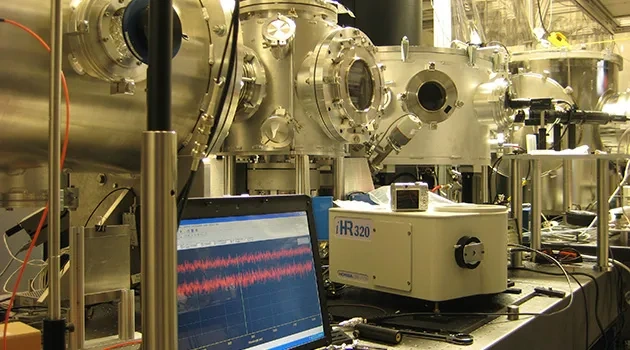UT's New Particle Accelerator Could Democratize Scientific Research

You may only know them from the dentist's office, but x-rays are pretty important when it comes to research. Used in nearly every scientific discipline, x-ray radiation created by massive particle accelerators has been consistently in high demand but low supply, with only two major accelerators in the world—one in California and one in Germany. A new accelerator created at UT, one-10,000th the size of its competitors, just might change that.
The particle accelerator created at UT fits on a tabletop, while its competitors are the size of two football fields. Biologists, chemists, and materials scientists all use powerful particle accelerators in their research, but the waiting lists for such massive facilities are long.
"Particle accelerators have become the largest and most expensive scientific instruments," says UT College of Natural Sciences professor Mike Downer. "At the same time, they're the most important to science, technology, and medicine."
Conventional devices shoot charged particles, like electrons, through a series of what are essentially metal plates, called capacitors. In order to produce more energy, more capacitors must be added to prevent a breakdown, which Downer compares to a massive bolt of lighting. With traditional accelerators, the more power you want, the bigger the device has to be.
But UT's newest accelerator uses ionized gas—think neon or fluorescent lights—to create plasma, a state of matter already broken down enough to prevent that lightning bolt. That means this unique, ultra-powerful key to natural science research no longer takes up multiple warehouses. It's not the first of its kind, but it's much smaller than conventional accelerators, and more powerful than its peers.
Downer credits UT professor Todd Ditmire's research on high-powered lasers as the basis of the technology that broke a seven-year logjam in particle accelerator research.
"I think the most important application will be x-ray sources that are equally as compact," Downer says. Accelerators can bounce particles off a magnetic device called a wiggler to generate radiation for a variety of experiments. When asked for clarification, Downer confirmed that wiggler, is in fact the device's real name.
So what's next for this amazing device? The possibilities may be endless. Major scientific discoveries, like the structure of DNA, used x-ray technology, Downer notes. Compact x-ray sources, he says, could "open up 3/4 of the universe" to scientific study.
Photo courtesy College of Natural Sciences.






